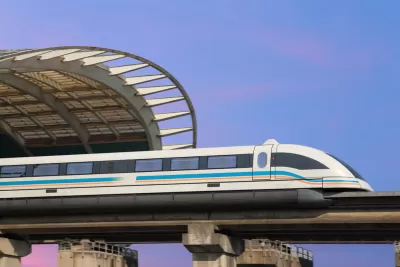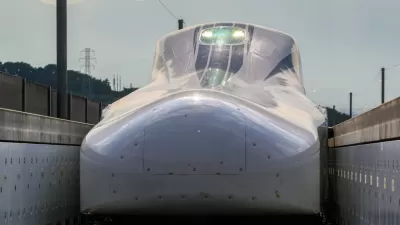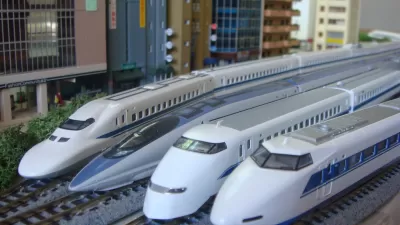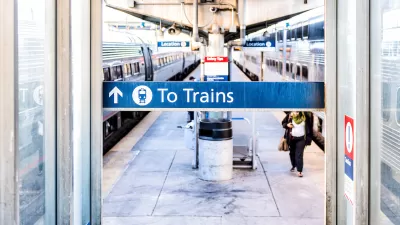The Federal Railroad Administration recently released a preliminary study of a proposed high-speed maglev train route between Baltimore and Washington, D.C.

The Federal Railroad Administration in January released a preliminary review of a proposal to build a high-speed maglev train system between Baltimore and Washington, D.C. as the first leg of a route that would eventually connect to New York City, reports Luz Lazo.
The preliminary review "[lays] out potential routes, as well as economic and environmental impacts of the train service that would move passengers between the nation’s capital and Baltimore in 15 minutes," according to Lazo.
The preliminary study considers two potential alignments, both running parallel to the Baltimore-Washington Parkway. Lazo provides more details on each of the potential alignments in the source article.
The project is estimated to cost between $13.8 billion and $16.8 billion, depending on alignment chosen. The costs has been rising. "Northeast Maglev, the private investors behind the project, had pegged costs at $10 billion to $12 billion. " Northeast Maglev has announced $5 billion in funding for the project from Japan.
According to Lazo, the project is facing stiff opposition from "residents, civic associations and elected officials in the project’s path." The federal study has already been delayed by a year.
Hat tip to Sandy Smith for sharing the Washington Post article.
FULL STORY: Federal review of Baltimore-Washington high-speed maglev project moves ahead

Alabama: Trump Terminates Settlements for Black Communities Harmed By Raw Sewage
Trump deemed the landmark civil rights agreement “illegal DEI and environmental justice policy.”

Study: Maui’s Plan to Convert Vacation Rentals to Long-Term Housing Could Cause Nearly $1 Billion Economic Loss
The plan would reduce visitor accommodation by 25% resulting in 1,900 jobs lost.

Why Should We Subsidize Public Transportation?
Many public transit agencies face financial stress due to rising costs, declining fare revenue, and declining subsidies. Transit advocates must provide a strong business case for increasing public transit funding.

Paris Bike Boom Leads to Steep Drop in Air Pollution
The French city’s air quality has improved dramatically in the past 20 years, coinciding with a growth in cycling.

Why Housing Costs More to Build in California Than in Texas
Hard costs like labor and materials combined with ‘soft’ costs such as permitting make building in the San Francisco Bay Area almost three times as costly as in Texas cities.

San Diego County Sees a Rise in Urban Coyotes
San Diego County experiences a rise in urban coyotes, as sightings become prevalent throughout its urban neighbourhoods and surrounding areas.
Urban Design for Planners 1: Software Tools
This six-course series explores essential urban design concepts using open source software and equips planners with the tools they need to participate fully in the urban design process.
Planning for Universal Design
Learn the tools for implementing Universal Design in planning regulations.
Smith Gee Studio
Alamo Area Metropolitan Planning Organization
City of Santa Clarita
Institute for Housing and Urban Development Studies (IHS)
City of Grandview
Harvard GSD Executive Education
Toledo-Lucas County Plan Commissions
Salt Lake City
NYU Wagner Graduate School of Public Service





























